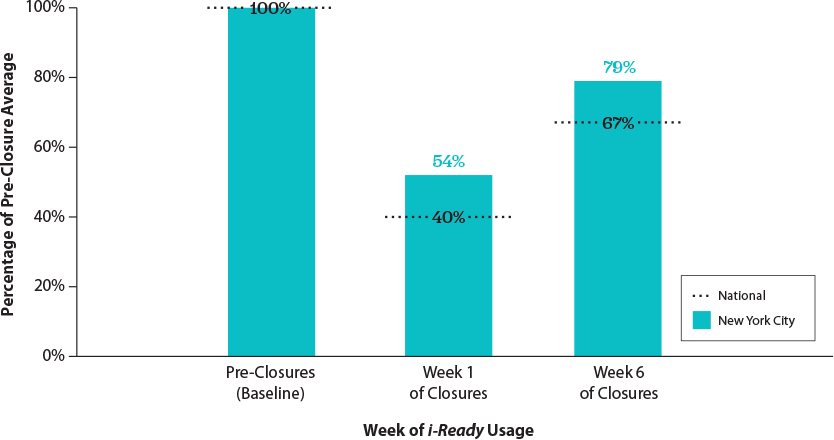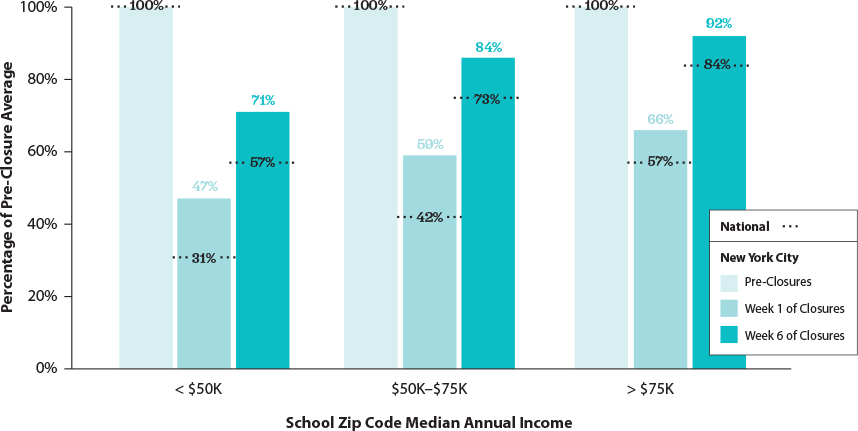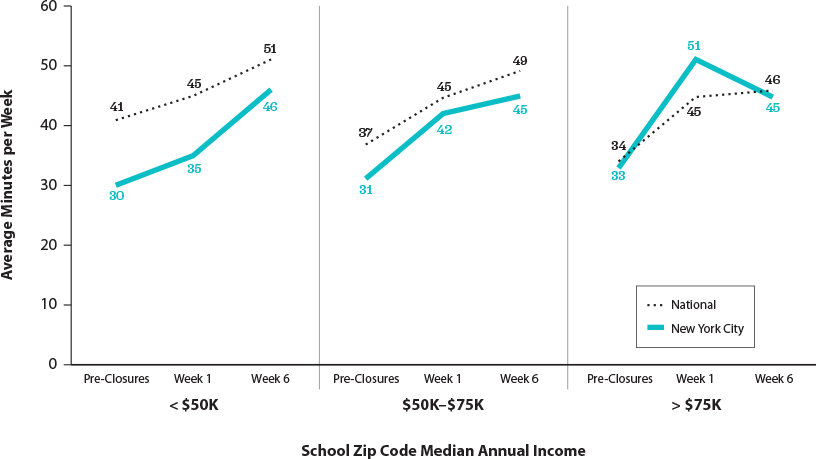i-Ready Online Instructional Usage Trends in New York City


Figure 2: In Week 1 of school closures, students from low-income zip codes saw a much larger drop in usage than their peers in high-income zip codes. By Week 6, usage has shown some recovery, but the gaps persist among zip codes. In New York City, the gaps are smaller than we’ve seen nationally.

Figure 3: When New York City students from low-income zip codes get access, they spend a similar amount of time in i-Ready as their peers from higher-income zip codes.

